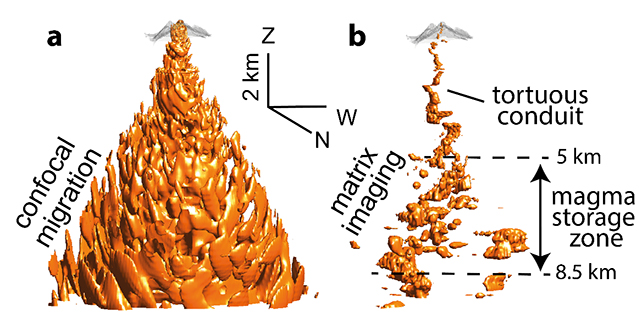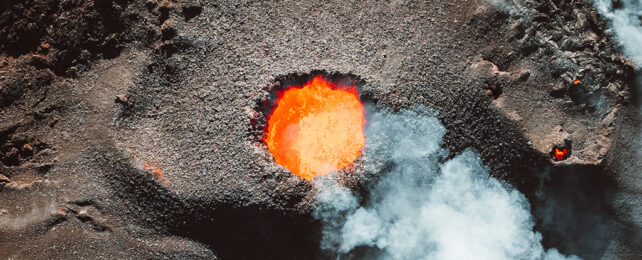We've never seen the inside of a volcano quite like this before. Researchers have developed a smart new imaging technique that lets us peer inside these gigantic natural tinderboxes to unprecedented levels of detail and depth.
The research team, from the French National Centre for Scientific Research (CNRS) and the Paris Institute of Planetary Physics (IPGP), borrowed some ideas from medical imaging and optical microscopes to come up with their approach.
It's a new take on an existing technique known as matrix imaging, and it helps overcome some of the difficulties of mapping volcanoes like this: not having many sensors (known as geophones) to log seismic waves reverberating through the Earth.

As these waves ripple around, they can be interpreted to figure out the different types of materials and the different types of layouts in Earth's crust. With the help of matrix imaging, that interpretation should get significantly easier.
"Volcanic eruptions necessitate precise monitoring of magma pressure and inflation for improved forecasting," write the researchers in their published paper.
"Understanding deep magma storage is crucial for hazard assessment, yet imaging these systems is challenging."
For a test subject, the researchers chose the La Soufrière volcano in Guadeloupe, in the Caribbean. The coverage offered by the network of geophones in use at this particular site is described as "sparse" by the researchers.
The math and physics behind the innovative approach is rather dense, but essentially the team devised a new way of combining the data from multiple geophones to figure out details that individual geophones couldn't capture on their own.
Part of the success of the technique lies in reducing distortions that occur as seismic waves bounce off different elements underground, using what's known as the memory effect to reverse-engineer distortions to figure out what the original signals were.
"Using wave correlations resistant to disorder, matrix imaging successfully unscrambles wave distortions, revealing La Soufrière's internal structure down to 10 kilometers (6.2 miles) with 100-meter (328-foot) resolution," write the researchers.
The revelations coming from this particular study include the presence of multiple complex layers of magma storage underground, and the way these layers are connected to other deep-lying geological features.
Of course, all this additional data means a better understanding of what's happening inside a volcano, which means being able to more accurately predict when an eruption might occur – potentially saving a large number of lives, in some parts of the world.
What's promising is that no extra sensors are needed, because matrix imaging can work with the data that already exists. The researchers are confident that the methods they've used here can be applied at other sites too.
"Matrix imaging can therefore become a revolutionary game-changer in the way scientists understand and model volcanic systems," write the researchers.
The research has been published in Communications Earth & Environment.
